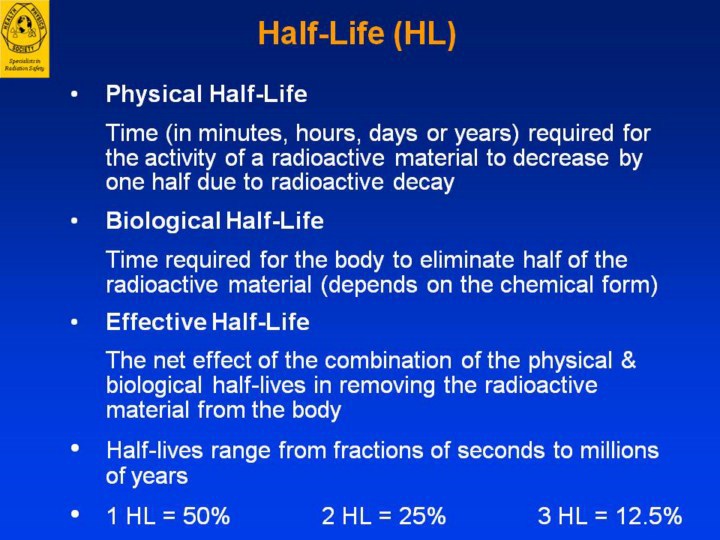| front |1 |2 |3 |4 |5 |6 |7 |8 |9 |10 |11 |12 |13 |14 |15 |16 |17 |18 |19 |20 |21 |22 |23 |24 |25 |26 |27 |28 |29 |30 |31 |32 |33 |34 |35 |36 |37 |38 |39 |40 |41 |42 |43 |review |
 |
Half-Life
•In
any sample of radioactive material, the amount of radioactive material
constantly decreases with time because of radioactive decay.
•The
physical half-life is the amount of time required for a given amount of
radioactive material to be reduced to half the initial amount by
radioactive decay.
•The
biological half-life is the time required for the human body to
eliminate half of the radioactive material taken into it. For many
radioactive materials, the elimination from the body occurs via
urination. However, depending on the chemical composition of the
radioactive material, other pathways can also help to eliminate the
radioactive material from the body.
•The
effective half-life is a measure of the time it takes for half the
radioactive material taken into the body to disappear from the body.
Both the physical half-life and the biological half-life contribute to
the elimination of the radioactive material from the body. The
combination of these two half-lives is called the effective half-life.
•After
one half-life, half of the material remains. After a second half-life,
a half of a half, i.e. 25% of the initial amount remains. After 10
half-lives, about 1/1000 remains. After 20 half-lives, only one
millionth of the material remains.
|